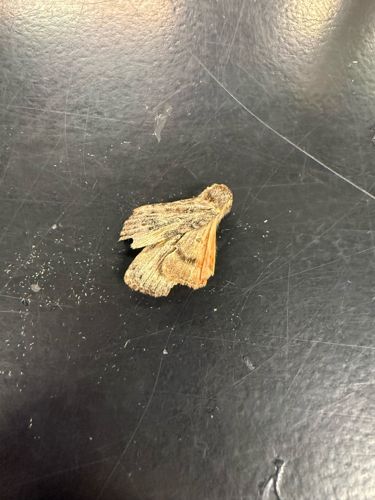Moth
Scientific Name: Lepidoptera (wings heavily worn, precise identification not possible)
Order & Family: Order: Lepidoptera, Family: Varies widely (e.g., Crambidae, Geometridae)
Size: Variable, from a few millimeters to several inches in wingspan. The visible part of the wing fragment suggests a medium-sized moth.

Natural Habitat
Widely varied depending on species, generally terrestrial environments including forests, grasslands, agricultural fields, and urban areas.
Diet & Feeding
Adult moths often feed on nectar or other liquid plant secretions, or they may not feed at all if they have vestigial mouthparts. Larvae (caterpillars) are typically herbivorous, feeding on leaves, stems, roots, or fruits of plants.
Behavior Patterns
Moths are typically nocturnal or crepuscular, though some species are diurnal. They undergo complete metamorphosis (egg, larva, pupa, adult). Adults are primarily focused on reproduction. The worn nature of the wing suggests it might be a remnant after the moth's life cycle or from predation.
Risks & Benefits
Potential risks can include agricultural damage by some larval species (e.g., corn earworm, cabbage looper). Some adult moths can be minor nuisance pests indoors. Benefits include pollination of plants (especially nocturnal flowers), serving as a food source for birds, bats, and other insects, and playing a role in nutrient cycling.
Identified on: 9/19/2025